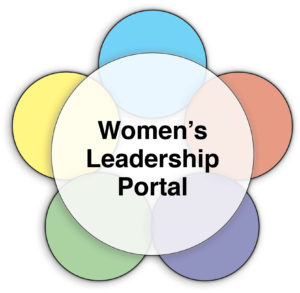 Stages of Change: What does change look like?
Stages of Change: What does change look like?
The stages of change model is a proven model of change that has been used for decades for smoking cessation, weight loss, and other difficulties that require “kicking the habit.” These five stages that individuals go through to quit any habit include: precontemplation (unaware that a problem exists), contemplation (awareness that the current situation including one’s own behavior needs to change), preparation (planning steps to make behavioral change), action (engaging in the new desirable behavior), and maintenance (reinforcing the new behavior to prevent relapse). This model for was originally put forth by Prochaska and DiClemente (1983) as they described the process of quitting smoking. They then applied it to institutions (2001) and then for institutional support for gender equity (2006). This table describes the stages of change, the accompanying 10 processes of change which specifies cognitive, affective and behavioral activities, and conceptual definitions with examples.
WHY IT WORKS | GET STARTED
STAGES of CHANGE
| Stage of Change | Change Processes | Conceptual Definitions | Examples |
| Stage 1: | Lack of awareness or concern of the impact of implicit bias. | “We’ve always done it this way, and it seems to work just fine.” | |
| Stage 2: | Consciousness raising | Involves increased awareness about the consequences for a particular behavior after confronted with the evidence. Recognizing theirs or others implicit bias. | “I’m so discouraged when looking at this evidence.” “What’s the use, nothing can get better.” “I am now seeing my bias toward others and am horrified.” |
| Dramatic Relief | When evidence confronts previous experience: the relief that one is not alone followed by reduced affect. | “It’s not just me; I am so relieved.” | |
| Environmental Reevaluation | Combines both affective and cognitive assessments of how the presence or absence of a personal habit affects one’s social environment. This discrepancy provides motivation for change. | “I am distressed that I may treat other women as not competent; what does that do to them?” | |
| Stage 3: | Self-reevaluation | Clarifying values and role models to change one’s self-image with or without a particular unhealthy habit. Identifying flaws in thinking and taking different actions. | “I saw a woman friend get publicly angry work today with a bad result; I am going to try and check my motives before reacting to a difficult situation” |
| Stage 4-5 | Self-liberation | Making and demonstrating a firm commitment to take actions toward change. The belief that “I can do it.” Belief in goodness of purpose, affirmation, approval (self-efficacy). | “I switched from a non-tenure track to a tenure track job based on my long-term research interests.” |
| Social liberation | Increasing social opportunities. Addressing policies and procedures to advance women. | “I created a lunchtime leadership seminar for women where we bring in speakers quarterly.” | |
| Contingency-reinforcement management | Provides consequences in the form of reward or punishment as a reinforcement for taking steps in a particular direction. | “I brought up a new idea today with the help of another colleague who echoed her agreement. We made that arrangement in advance of the meeting.” | |
| Helping relationships | Creating and giving support using mentors or helping others. | “I found a women mentor at another institution that seems to balance her job and family life well.” | |
| Counter-conditioning | Requires the learning of healthier behaviors that can substitute for problem behaviors-meditation, identifying alternatives to support staying on track. | “Participating in coffee chit chat with administrative assistants to get projects moving.” | |
| Stimulus control | Removes cues for unhealthy habits and adds positive cues (avoidance, self-help groups, visual). | “I put a screensaver of famous women on my computer to remind me that I can do it too.” |
Stages of change model with associated processes, conceptual definitions, and examples (Adapted from Isaac, Kaatz, Lee, & Carnes, 2012).
REFLECTIVE QUESTION
Where are you on the stages of change continuum?
References
Isaac, C., Kaatz, A., Lee, B., & Carnes, M. (2012). An educational intervention designed to increase women’s leadership self-efficacy. CBE life sciences education, 11(3), 307-322.
Prochaska, J. M., Mauriello, L. M., Sherman, K. J., Harlow, L., Silver, B., & Trubatch, J. (2006). Assessing readiness for advancing women scientists using the transtheoretical model. Sex Roles, 54(11-12), 869-880.
Prochaska, J. M., Prochaska, J. O., & Levesque, D. A. (2001). A Transtheoretical approach to changing organizations.Administration and Policy in Mental Health, 28(4), 247-261.
Prochaska, J. O. (2008). Decision making in the transtheoretical model of behavior change. Medical Decision Making, 28(6), 845-849.
Prochaska, J. O., & DiClemente, C. C. (1983). Stages and processes of self-change of smoking: Toward an integrative model of change.Journal of Consulting and Clinical Psychology, 51(3), 390-395.
